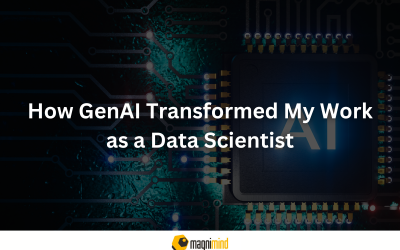We already know that data science is one of the most trending buzzwords in today’s tech world, with an exceptional potential of opportunities for aspirants. If you belong to this league and are planning to pursue a career in this field, being familiar with the fundamental concepts is of utmost importance. You mayn’t need a Ph.D. to excel in data science, but you’ve to have a solid understanding of the basic algorithms.
If you’ve just entered the field, you probably have come across people saying probability and statistics are the crucial prerequisites for data science, and they are correct. Having a good understanding of these two aspects would not only arm you with the concepts but will also help you attain your goal of becoming a data science professional.
In this post, we’re going to explain the basics of probability and statistics in the context of data science with some advanced concepts.
1- Probability

Probability stands for the chance that something will happen and calculates how likely it is for that event to happen. It’s an intuitive concept that we use on a regular basis without actually realizing that we’re speaking and implementing probability at work.
1.1- The need of probability

Randomness and uncertainty are imperative in the world and thus, it can prove to be immensely helpful to understand and know the chances of various events. Learning of probability helps you in making informed decisions about likelihood of events, based on a pattern of collected data.
In the context of data science, statistical inferences are often used to analyze or predict trends from data, and these inferences use probability distributions of data. Thus, your efficacy of working on data science problems depends on probability and its applications to a good extent.
1.2- Conditional probability

They naturally arise in the investigation of experiments where a trial’s outcome may affect subsequent trials’ outcomes. It’s a measure of the probability of a particular situation occurring (an event) given that (by evidence, assertion, presumption, or assumption) another event has occurred. Now, if the probability of the event modifies when the first event is taken into consideration, it can be said that the probability of the second event is dependent on the occurrence of the first event.
1.3- Conditional probability and data science

A number of data science techniques depend on Bayes theorem. It’s a formula that demonstrates the probability of an event depending on the prior knowledge about the conditions that might be associated with the event. Reverse probabilities can be found out using the Bayes theorem if the conditional probability is known to us. With the help of this theorem, it’s possible to develop a learner that is capable of predicting the probability of the response variable of some class, given a fresh set of attributes. Implementing of code interconnect the knowing possibilities.
1.4- Random variables
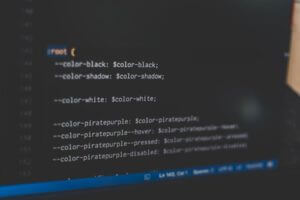
To calculate the likelihood of an event’s occurrence, a framework needs to be put to express the outcome. And random variables are numerical descriptions of these outcomes.
It’s a set of possible values derived from a random experiment. It’s a variable whose possible values are a random phenomenon’s outcomes. Random variables are divided into two categories namely continuous and discrete.
A continuous random variable is the one that considers an infinite number of possible values. These variables are usually measurements such as weight, height, and time needed to run a mile, among others.
A discrete random variable is the one that may just take on countable quantity of different values like 2, 3, 4, 5 etc. These variables are usually counts such as the number of children in a family, the number of faulty light bulbs in a box of ten etc.
1.5- Probability distribution
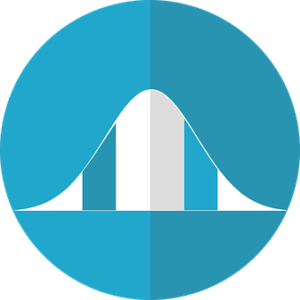
Probability distribution is a function that describes all the possible likelihoods and values that can be taken by a random variable within a given range. For a continuous random variable, the probability distribution is described by the probability density function. And for a discrete random variable, it’s a probability mass function that defines the probability distribution.
Probability distributions are categorized into different classifications like binomial distribution, chi-square distribution, normal distribution, Poisson distribution etc. Different probability distributions represent different data generation process and cater to different purposes. For instance, the binomial distribution evaluates the probability of a particular event occurring many times over a given number of trials as well as given the probability of the event in each trial. The normal distribution is symmetric about the mean, demonstrating that the data closer to the mean are more recurrent in occurrence compared to the data far from the mean.
2- Statistics
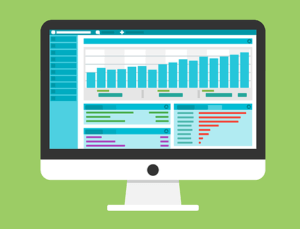
Statistics is the study of collection, interpretation, organization analysis and organization of data and thus, data science professionals need to have solid grasp of statistics.
Descriptive statistics together with probability theory can help them in making forward-looking business decisions. Core statistical concepts are needed to be learned in order to excel in the field. There’re some basic algorithms and theorems that form the foundation of different libraries that are widely used in data science. Let’s have a look at some common statistical techniques widely used in the field.
2.1- Classification

It’s a data mining technique, which assigns categories to a collection of data to help in more accurate analysis and predictions. Known as a Decision Tree as well, it’s one of the many methods meant for making the analysis of massive datasets effective. Classification techniques are divided into two major categories namely discriminant analysis and logistic regression.
2.2- Linear Regression

In statistics, Linear Regression is a method used to predict the target variable after insertion of the best linear relationship between those variables. Simple Linear Regression is where a single independent is used while in Multiple Linear Regression, many independent variables are used to predict a dependent variable.
2.3- Resampling Methods

It’s a non-parametric method pertaining to statistical inference wherein repeated samples are drawn from the actual data samples. Here, the utilization of generic distribution tables in order to compute approximate p probability values doesn’t happen.
It can develop a unique sampling distribution based on the original data by using experimental methods. Having a good understanding of terms Cross-Validation and Bootstrapping can help you develop the concept of Resampling Methods.
2.4- Bootstrapping
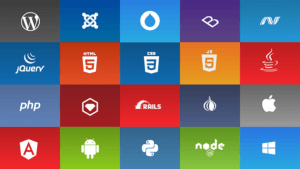
It’s a technique that aids in different situations like validation of performance of a predictive model, ensemble methods etc. It performs by sampling with replacements from the actual data, “not chosen” data points are considered here as test cases.
2.5- Cross-Validation
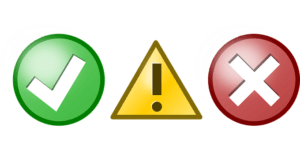
It’s a technique followed for validating the model performance. It’s done by splitting the training data into k parts. The k-1 parts are considered as the training set while the “held out” part is considered as the test set.
2.6- Tree-Based Methods

Tree-Based Methods are used to solve both regression and classification problems. Here, the predictor space gets segmented into various simple regions together with a set of splitting rules that is summarized in a tree.
These kinds of approaches are referred to as Decision-Tree methods and they develop multiple trees that are merged to obtain a single consensus prediction. Random forest algorithm, Boosting and Bagging are the major approaches used here.
2.7- Bagging

Bagging essentially stands for creating multiple models of a single algorithm – such as a Decision Tree. Every single model is trained on a sample data different in nature (called bootstrap sample). As a result, every Decision Tree is developed using different sample data, which solves the issue of overfitting to the sample size. This grouping of Decision Trees essentially helps in decreasing the total error, as there’s a reduction in the overall variance with the addition of every new tree. A random forest is what we call a bag of such Decision Trees.
In data science, a lot of other concepts and techniques of statistics are used apart from the above. It’s also important to note that if you obtain a good grasp of statistics in the context of data science, working with machine learning models can be one of the best ideas. Once you’ve learned the core concepts of statistics, you can try to implement some machine learning models right from the beginning to develop a good foundational knowledge about their underlying mechanics.
Key takeaway

This was a fundamental rundown of some basic concepts and techniques of probability and statistics used in the context of data science. This understanding can help aspiring data science professionals to obtain a clear and better knowledge of the field.
When it comes to probability, a huge portion of data science relies on estimating the probability of occasions – from the likelihood of disappointment for a segment in the production system, to the chances of an advertisement getting tapped on. And once you’ve developed a good grasp of likelihood hypothesis, you can gradually move forward to find out about the measurements – which will lead you toward deciphering information and helping stakeholders in making informed business decisions.
Simply put, having a good comprehension of the concepts, strategies, and techniques utilized in both probability and statistics greatly helps you in gaining better and deeper insights. However, apart from these two subjects, you also need to master other fields like mathematics, machine learning, programming etc to rise above the competition when you’ll actually start working in the field of data science. And data science bootcamp is the most convenient way to learn these fields.
. . .
To learn more about data science, click here and read our another article.


